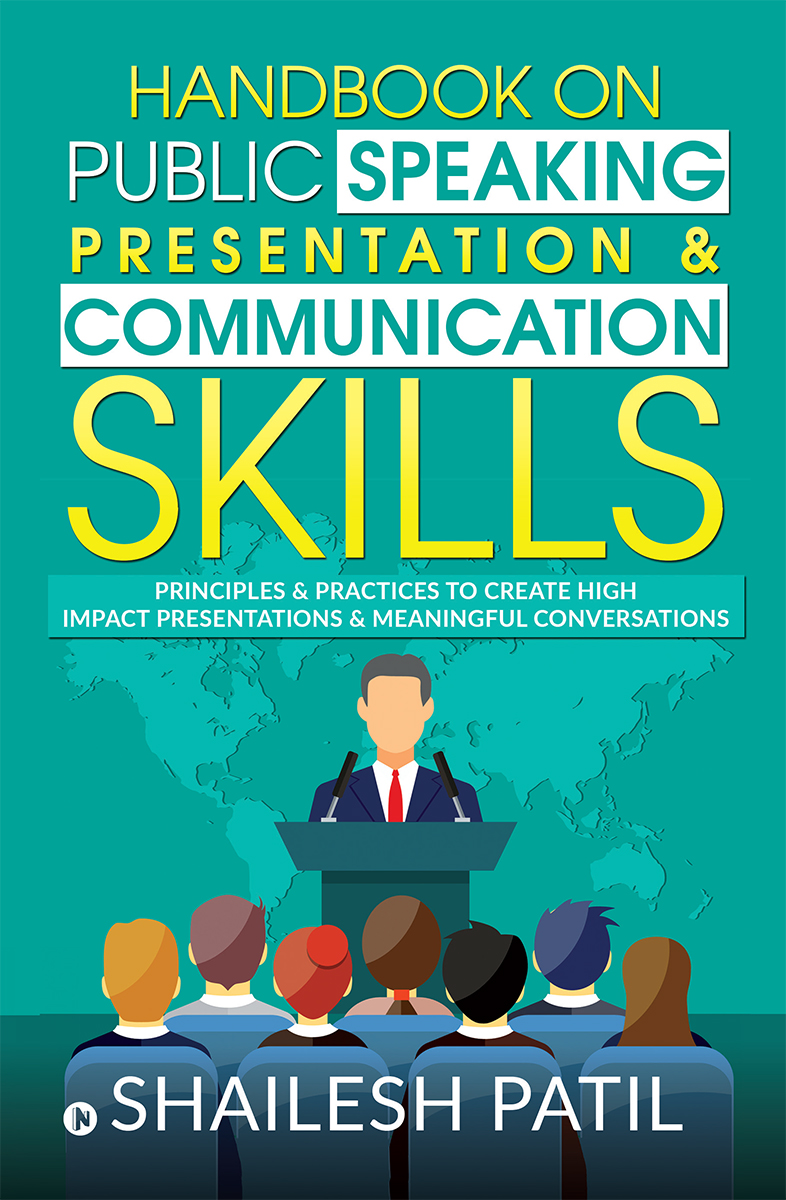
Toolbar


Self-Help | 17 Chapters
Author: Shailesh Patil
Handbook on Public Speaking, Presentation & Communication Skills, as the title suggests, is for anyone looking to improve their presentation and communication skills in their professional or personal lives. In this book, Shailesh Patil explains the importance of being able to communicate and present effectively and tells readers how exactly to do so. The book also suggests secondary reading resources and contains activities to sharpen your skil....
01
Public Speaking, Presentation and Communication: Introduction
Speeches have transformed people and created an unprecedented impact. This is proved by instances as mentioned through the entire History of Mankind and through the ages.
Starting from the founders of all major religions of the world to great modern-day leaders, all have brought about transformations by communicating effectively.
Swami Vivekananda’s heart-touching and inspiring speech starting with ‘Sisters and brothers of America’, in which he introduced Hinduism at the parliament of the world’s religions in Chicago in 1893, resonates even today. American civil rights activist, Martin Luther King Jr’s, 1963 speech I Have a Dream is considered as the most defining moment of the American Civil Rights Movement. Mahatma Gandhi’s innumerable speeches motivated lakhs of Indians to join and contribute to India’s Freedom Movement.
Even today, successful corporates and effective governments are driven by great leaders who know the importance of superior communication, public speaking and presentation skills.
In the entire book, I have used the three terms – presentation, public speaking and communication – liberally, interchangeably as well as individually, based on the context and narrative sense.
The following are two strong reasons for using the three terms in the same tone:
1. In my many years of training people and consulting corporates, I realised that all the three serve the same purpose – to connect with the listener and your audience.
2. Public speaking is a soft skill that requires excellent communication skills, enthusiasm and the ability to engage with an audience. Public speakers make presentations to a group.
Presentations range from speaking to a small group of employees to presenting to a large audience at a national conference or event.
Most skillsets, abilities and preparations needed to be comfortable with communicating, presenting or making a public speech are the same, regardless of the size of the group.
Hence, all the three terms are used interchangeably as well individually based on the context in the entire book.
Given below are some similarities and differences between public speaking, presentation and communication.
1. Presentation sounds more formal with specific timelines and structure, whereas communication sounds more informal and can vary as per your rapport with the receiver.
2. Then there is written communication, which also sounds formal but with the restriction of choice of words and other structural needs.
3. Presentations can also be informal when you need to present to a known audience, like your own team (selling an idea, motivating them or acknowledging a business success).
4. Presentation is considered more goal-oriented when compared to communication and may take greater effort on the part of the presenter. Finally, English has always displayed some fuzzy logic. Therefore, as you speak and write in English, you have to use some logical wisdom as to where you’d need to use the three terms (public speaking, communication, presentation) so that we make listening sense.
In English language, one word can have multiple meanings and uses.
It is a known fact that many of the words in English have more than one meaning. The word ‘run’, for example, has 179 meanings according to
Some examples using the word ‘run’:
He runs a hotel business.
I love to run in the park every morning.
The hospital runs a regular camp on arthritis.
Don’t run your machine on auto mode.
E-commerce is giving traditional retailers a run for their money.
For example:
• The CEO presented his displeasure over the non-achievement of target numbers to his team. (I am sure you were tempted to substitute ‘presented’ with ‘communication’.)
• The CEO communicated the annual budget plan to the board members and the top investors. (Here, I’m sure you were tempted to substitute ‘communicated’ with ‘presented’.)
• The CEO made a rare public appearance and explained the vision of the company to all the stakeholders.

Self-Help | 17 Chapters
Author: Shailesh Patil
Support the author, spread word about the book to continue reading for free.
Handbook on Public Speaking, Presentation & Communication Skills
Comments {{ insta_features.post_zero_count(insta_features.post_comment_total_count) }} / {{reader.chap_title_only}}
{{ (txt.comment_text.length >= 250 ) ? txt.comment_text.substring(0,250) + '.....' : txt.comment_text; }} Read More
{{ txt.comment_text }}
{{txt.timetag}} {{(txt.comment_like_count>0)? txt.comment_like_count : '' }}{{x1.username}} : {{ (x1.comment_text.length >= 250 ) ? x1.comment_text.substring(0,250) + '.....' : x1.comment_text; }} Read More
{{x1.comment_text}}
{{x1.timetag}} {{(x1.comment_like_count>0)? x1.comment_like_count :''}}{{x2.username}} : {{ (x2.comment_text.length >= 250 ) ? x2.comment_text.substring(0,250) + '.....' : x2.comment_text; }} Read More
{{x2.comment_text}}
{{x2.timetag}} {{(x2.comment_like_count>0)?x2.comment_like_count:''}}